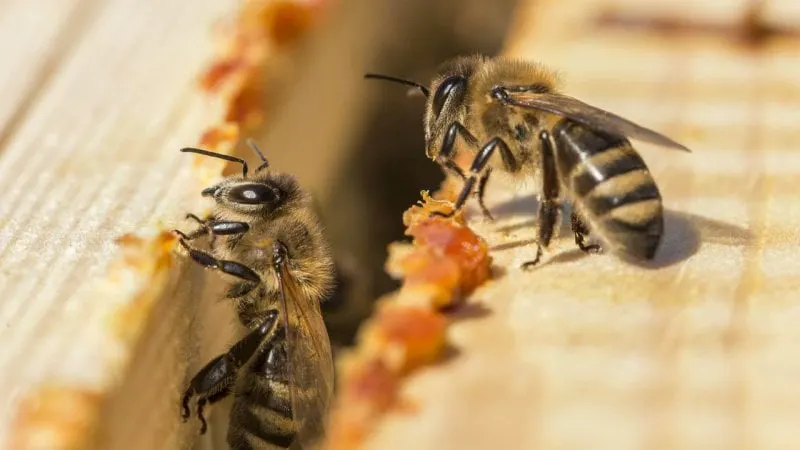The biggest threat to honeybees is not pesticides but Varroa mites — and beekeepers may have accidentally fueled the plague
The biggest threat to honeybees is not pesticides but Varroa mites — and beekeepers may have accidentally fueled the plague


Propolis is a sticky material that bees make from a mixture of wax and resins gathered from a wide variety of plants. They use it to coat the inner walls of their hives, to plug holes in the hive wall that might otherwise admit predators, and to encase the bodies of those intruders which do manage to breach that wall and have subsequently been stung to death.
Evidence is mounting, however, that propolis serves as more than just a building and embalming material. This evidence indicates that it also has antimicrobial properties which help bees fend off a range of dangerous diseases.
It seems pretty clear, then, that propolis helps protect against Varroa infestations. But this raises the question of why bees do not make more use of it in their brood cells.
A plausible answer is that the ability to do so has been bred out of them.
…
Reversing the consequences of such selective breeding will not be easy. It might possibly be done by hybridising domesticated mellifera with wild strains of the species, or with other species of Apis that have not lost the knack of making propolis.
This is an excerpt. Read the original post here.

 | Videos | More... |

Video: Nuclear energy will destroy us? Global warming is an existential threat? Chemicals are massacring bees? Donate to the Green Industrial Complex!
 | Bees & Pollinators | More... |

GLP podcast: Science journalism is a mess. Here’s how to fix it

Mosquito massacre: Can we safely tackle malaria with a CRISPR gene drive?

Are we facing an ‘Insect Apocalypse’ caused by ‘intensive, industrial’ farming and agricultural chemicals? The media say yes; Science says ‘no’
 | Infographics | More... |

Infographic: Global regulatory and health research agencies on whether glyphosate causes cancer
 | GMO FAQs | More... |

Why is there controversy over GMO foods but not GMO drugs?

How are GMOs labeled around the world?

How does genetic engineering differ from conventional breeding?
 | GLP Profiles | More... |

Alex Jones: Right-wing conspiracy theorist stokes fear of GMOs, pesticides to sell ‘health supplements’




 Viewpoint — Fact checking MAHA mythmakers: How wellness influencers and RFK, Jr. undermine American science and health
Viewpoint — Fact checking MAHA mythmakers: How wellness influencers and RFK, Jr. undermine American science and health Viewpoint: Video — Big Solar is gobbling up productive agricultural land and hurting farmers yet providing little energy or sustainabilty gains
Viewpoint: Video — Big Solar is gobbling up productive agricultural land and hurting farmers yet providing little energy or sustainabilty gains Trust issues: What happens when therapists use ChatGPT?
Trust issues: What happens when therapists use ChatGPT? Fighting deforestation with CO2: Biotechnology breakthrough creates sustainable palm oil alternative for cosmetics
Fighting deforestation with CO2: Biotechnology breakthrough creates sustainable palm oil alternative for cosmetics California, Washington, Oregon forge immunization alliance to safeguard vaccine access against federal undermining
California, Washington, Oregon forge immunization alliance to safeguard vaccine access against federal undermining 30-year-old tomato line shows genetic resistance to devastating virus
30-year-old tomato line shows genetic resistance to devastating virus The free-range chicken dilemma: Better for birds, but with substantial costs
The free-range chicken dilemma: Better for birds, but with substantial costs ‘You have to treat the brain first’: Rethinking chronic pain with Sanjay Gupta
‘You have to treat the brain first’: Rethinking chronic pain with Sanjay Gupta
